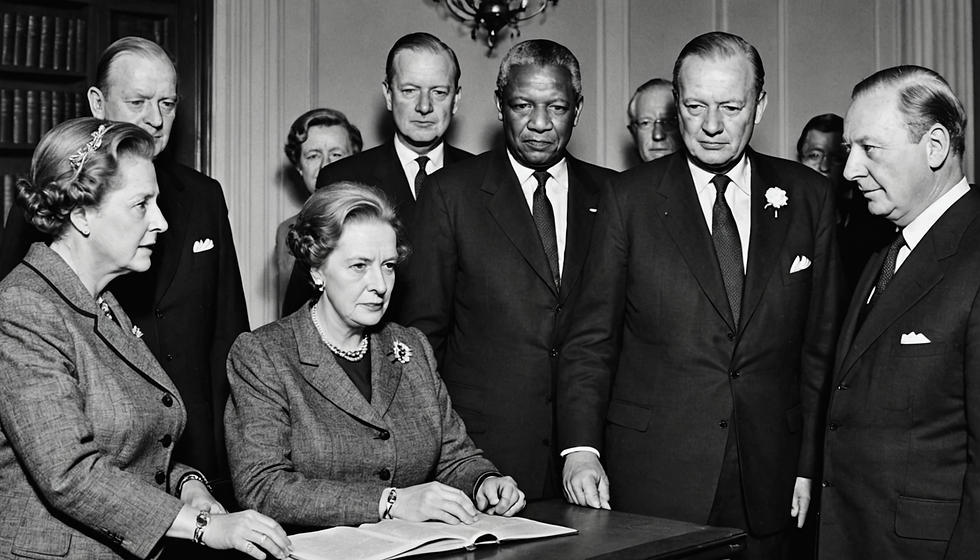Rose-Marie Boylan: The Eisenhower method in business
- R.M. Boylan

- Jul 27, 2021
- 4 min read
By: Rose-Marie Boylan, BSc. M.A.
Dwight Eisenhower himself is quoted as saying:
“What is important is seldom urgent and what is urgent is seldom important.”
1890 – 1969
Setting Priorities: The Eisenhower Method
Important tool for prioritizing.
Dwight Eisenhower was the 34th President of the United States. He was a five-star General in the United States Army during World War II. He served as Supreme Commander of the Allied Forces in Europe. By learning the methods used by historical leaders at achieving success and results we can learn how to apply these principles in our day to day to eliminate feelings of overwhelm because we are not setting priorities effectively. Not knowing what is "Urgent" vs. "Important" can produce a lack of accountability and focus on what drives results for the business and our boss.

The above diagram summarizes many things we may think are productive which we mistake as productive which may not be driving results. Stephen Covey took Dwight Eisenhower's Method and built the book "The 7 Habits of Highly Effective People". In Mr. Covey's book he has a convenient matrix similar to the Quadrants I have laid out above which explains how we set up our time on tasks that are results driven vs. time wasters. This was how Eisenhower prioritized.
Sometimes employees substitute habits or unproductive movement and tasks for tangible results and outcomes. Action without results equals failure. Being "busy" feels good enough, so we don't try harder. Using this tool allows us to evaluate our activities in a pandemic & upgrade them so we are advancing and changing to a growth mindset vs. a fixed mindset.
"Leadership is the ability to recognize a problem before it becomes an emergency."
Adapted from Arnold H. Glasow
As a General Eisenhower used the above method for planning around the most important and urgent things. He used it for war strategy, so I imagine it can work at business results. The method he used required short-term skills at delivering immediate results in crisis leadership situations. He was also a strategic and a critical thinker around contingency planning for coming up with such a simple and effective method for prioritizing what matters for driving outcomes.
His method was popularized by Stephen Covey in the book “First Things First” and “The 7 Habits of Highly Effective People.” It is available and can be applied to planning our key actions which will drive our results in the coming year. Understanding that we need to aim accurately from January to May 30th is pivotal to achieving quotas in competitive markets before the summer slow down. For this reason knowing what is "Urgent & Important" and what is "Not Urgent but Important" is paramount to our success. These activities are the drivers of our results for calendar year before the summer slow down.
Spending more than 50%-70% of our time in "Urgent/Important" crisis situations means we are likely not planning enough the "Not Urgent/but important" work that drives results, outcomes and global leadership. We also will experience significant oxidative stress which ages us prematurely being stuck in "being busy" and generating no results. The sympathetic nervous system of arousal with all the cortisol associated with "busy-ness" makes us think we are working. What is work if it does not produce desirable results?
If we do not focus on the "Not Urgent/ Important", these strategies & tactics eventually turn into a crisis or an urgent matter which becomes time sensitive and a risk to the organization. Planning ahead where we focus our energy can make a tremendous impact on our year-end results. "Where attention goes, energy flows." Aiming at the right activities that drive revenue is critical. It also increases employee accountability to results and outcomes that matter to business sustainability and growth.
Stephen Covey mentions that in our work oftentimes people spend most of their time and energy in Quadrant I "Urgent/Important", Quadrant III "Urgent/Not Important" and Quadrant IV "Not urgent/Not Important". Sadly, if our employees are spending over 70% of their time in Quadrants III & IV, this leads a business to financial losses, employee disengagement and worst case scenario bankruptcy. In my career, whenever sales were dwindling or shy of plan, I used this method to uncover where employees or organizations were focusing their efforts so we could refocus on the drivers of results. An analysis of workflow can be most effective if your sales, market access or corporate strategy are simply not going anywhere. In order to change the results, we need to change the Quadrants and priorities.
For this reason using an objective coach to take the time and energy to analyze unproductive workflow activities is a welcomed intervention for leaders in organizations and companies. It also reduces liabilities because it is not "Person related" but activity, skills and competency related.
With this methodology and the skills to do the tasks we can analyze any business with the right analytics and figure out what the goal is and how to get there by focusing on the right things that drive short-term results & long-term outcomes. The methodology is powerful. “Important/Not Urgent" are business critical to the organization today, but their impact or consequence may only be seen in 6 months or longer. People tend to not focus on this area because these priorities only become time sensitive when they become "Urgent/Important". But they drive your mid to long term results. Not paying attention to them can also lead a corporation or business to bankruptcy. Humans are creatures of habits, breaking habits can be frightening at first but exhilarating because humans get more inspired when neurons fire through learning new skills and changing mental models which keep us stuck.
This tool is one of the simplest tools that can very quickly tell you what needs to get done or how your employees are spending their time. We can really help employees get out of overwhelm and focus on results for the business using Eisenhower's method and customizing it to each employee's coaching case.
Managing time and priorities this way allows us to deliver results and make our bosses really happy with the results we achieve by year end!
References:
Covey, S. The 7 Habits of Highly Effective People. (1989). Stephen Covey.





Comments